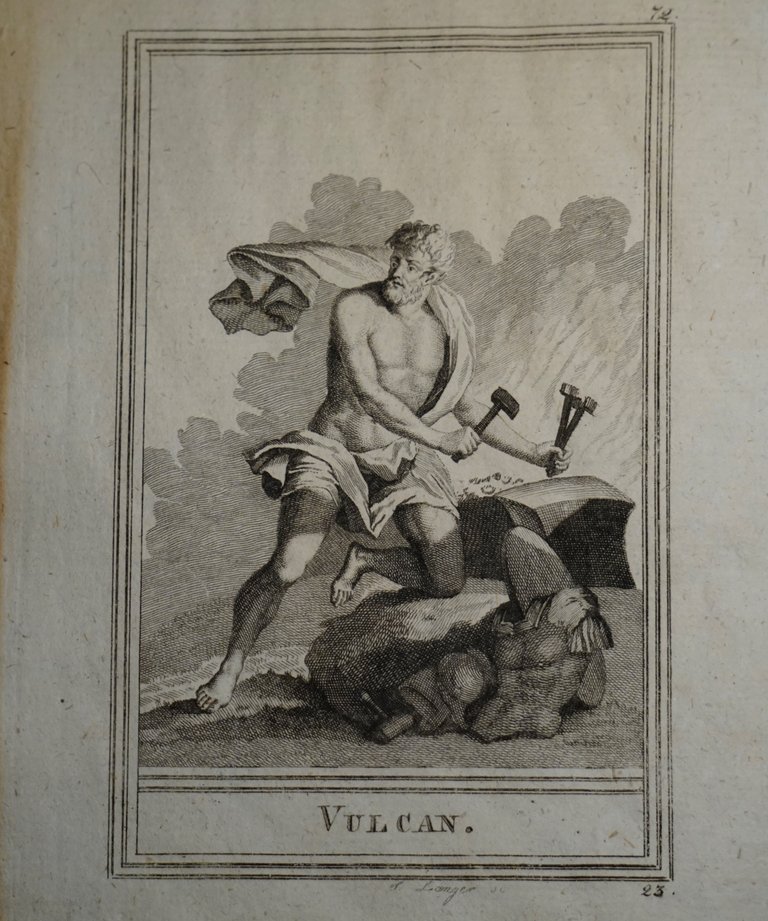Hey dear Hive friends, first of all I would like to welcome you all to my contribution and hope you had a day full of positive experiences! Today I would like to talk about art history and hope you can learn something new.
Recently I got this enchanting work of art, which was made with the help of a printing technique, which is also called copper engraving. This work presents the Roman god of fire as well as blacksmithing vulcan and it was probably made over 200 years ago and dates back to the beginning of the 19th century and for the fact that the work is already so old, it is still very well preserved and presents this Roman god very detailed. Vulcan fits well to this technique because the origins of the copper engraving are also strongly linked to the goldsmiths and the goldsmiths of the late Middle Ages are considered the inventors of this process and were already very familiar with engravings and captured their graphics on paper. One of the revolutionaries of this technique was the goldsmith Albrecht Dürer who had already learned a lot about engravings in his work and as a basis for these artworks you first need a drawing which is then placed upside down on a plate of copper which is covered with a thin layer of chalk, soot or water. Then, with the help of a chisel that also resembles a pen, the drawing or the motif is dug into the metal and more experienced artists already used other tools that made this work easier for them and then the plate is heated and coated with paint and through the heating the paint then penetrates better into the pit and the printing process can begin. The plate is then cleaned and the color is removed in the places outside the pit where no printing should take place and in the end the motif is printed to the paper by strong pressing and the advantage was that you could create a huge number of works in this way and in addition tis technique was very detailed and you could create the previously created graphic sharp and with a high degree of detail. It was possible to create several hundred prints per plate until the quality decreased and the copper engraving was particularly common in the Netherlands and Germany at the time and it was also increasingly revolutionised and adapted.
Thank you very much for stopping by and I hope you could learn something new about art history! I captured these pictures with my Camera Sony Alpha 6000 plus 55-210 mm lens!



The pictures really come so so amazing
Thank you so much
#hive #posh
If the quality of the copper engraved started decreasing, I am sure it is time to withdraw
I have already discussed this in more detail in the article.
I didn't know about it before, after reading your post my knowledge has increased a lot.
Very motivating for me to hear that you were able to expand your knowledge!
Thanks alot dear.
~~~ embed:1736627648699175381?t=ax9DanOO4_cF43v5YsT-qg&s=19 twitter metadata:YWRlbmlqaWFkZXNoaW43fHxodHRwczovL3R3aXR0ZXIuY29tL2FkZW5pamlhZGVzaGluNy9zdGF0dXMvMTczNjYyNzY0ODY5OTE3NTM4MXw= ~~~